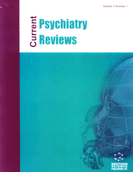Abstract
The term “Atypical Depression” refers to a subtype of mood disorder that has been most clearly associated with reversed neurovegetative features and interpersonal deficits such as rejection sensitivity and social avoidance. The most robust clinical correlates of atypical depression include a high preponderance of female cases, an early age of onset, and high rates of chronicity and co-morbidity. Particularly strong links to early adversity and chronic stress have also been described. Regarding treatment outcomes, atypical depression has historically been associated with both MAOI responsiveness and tricyclic resistance, with recent data further suggesting that it is the early onset atypical subgroup that accounts for these findings. There have been few large scale studies of newer anti-depressants such as SSRIs and buproprion in atypical depression, although practical issues have encouraged the use of these agents as first-line treatments. Going forward, high priorities for research include optimizing the definition of atypical depression for DSM-V, more clinical studies with newer anti-depressant classes, and a greater focus on developmentally-based research that considers intergenerational transmission of risk, gene-environment interaction and adverse early environments.
Keywords: Atypical major depression, depressive subtyping, epidemiology, pathophysiology, treatment response, developmental strategies, early onset, chronicity
 2
2



